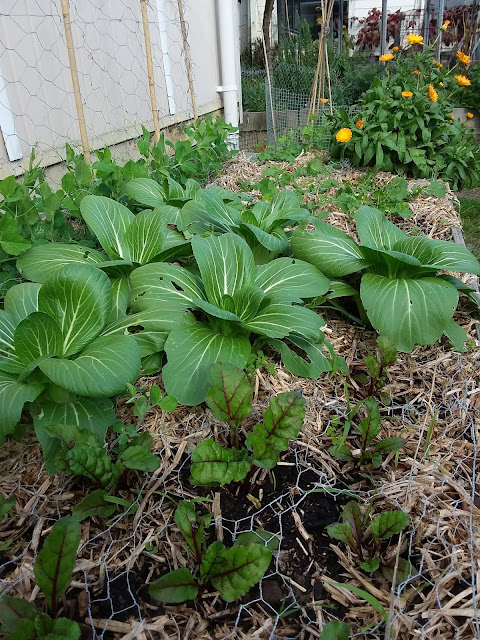Winter Reading
*Note: I started this post at the beginning of July. We have had a couple of gorgeous sunny days since then, but Winter has still very much settled in to stay for a while*
_______________________________________________________
But this is a week for darting out to the garden when the rain lets up for a few minutes to check on the veggies and harvest a few peas and green leaves to go with lunch. This is the kind of week when mostly the act of gardening is reading, learning, and planning. It seems like a good time to share a few good resources.
I recently checked two gardening books out from the library. One is an old friend; the other is a new to me.
One Magic Square, by Lolo Houbein
When I first started gardening, a friend recommended this book to me. Re-reading this some eight years later I realise what a lasting effect it had on me. I can think of no other book that so enthusiastically encourages the reader to just get out there and do gardening already. The first line of the book is this:
"To start growing your own food without delay, put down this book, go out into the garden and select a spot in the sun."
Houbein then spends just one page telling the reader how to work one square meter of garden into shape, and then declaires "You are now a food gardener!" I love this book for the passion that comes through in every page. For its constant encouragement to just start gardening already and forget about it being perfect. And for its underlying mission of encouraging people and communities to garden as a means of food security.
I love this bit from the section on climates and microclimates:
"Never garden in a mood of wanting to control everything. Observe nature's way. Don't be quick to interfere when things grow in unexpected ways - there may be reasons."
I appreciate Houbein's basic approach to gardening because it is similar to mine: holistic, and a little wild. It's about being in conversation with nature, not trying to control it. Indeed, it is what I am trying to get at with the title of this blog.
At the heart of this book are the one square meter garden plots. Houbein maps out ingenius designs for getting the most out of every square meter of garden. The central conceit is that a new gardener can start with just one square meter and expand from there year after year. The clever designs take into account the seasons, companion planting, intercropping, and culinary requirements. There are salad plots, stir fry plots, curry plots, and so on.
I admit I never did use any of the square meter designs. However, this book started me thinking in square meters, and I do it to this day. I have always had raised bed of some sort, and they tend to be about one meter wide - the perfect width for me. When I am planning my garden layouts, I don't make long rows. I plan them one square meter at a time. Some crops may spill over from one square to another (like the peas currently running along the back of my main garden bed) but in my head the basic layout is divided into square meters. When you are working with small spaces, this approach to design opens up a lot of possiblities.
Well, I thought I was going to tell you about that a second book, but just writing about how much I love this one book has taken long enough. I will save it for another day.



Comments
Post a Comment